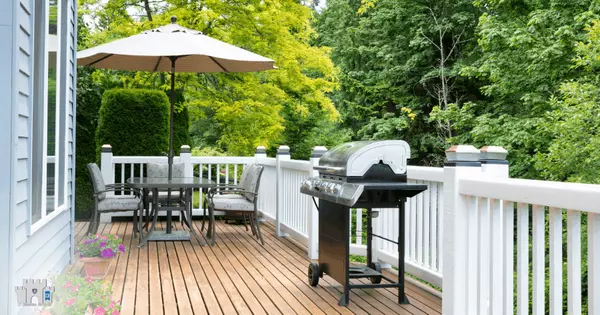Building a Routine That Keeps Your Home in Shape

A tidy home doesn’t come from one big cleanup—it’s the result of small, steady habits. The more often you do little things, the less clutter builds up. Start by making your bed each morning; it sets the tone for the day. Wipe counters and tables after use so surfaces stay clean. Return items to thei
Read MoreSimple Deck Care Tips for Homeowners

A deck adds great outdoor living space but needs care to stay safe and attractive. Splintering often happens when wood dries out, cracks, or weathers over time. Regular maintenance prevents damage before it becomes serious. Start by sweeping the surface weekly to remove debris. Dirt and moisture can
Read MoreHow Video Walkthroughs Improve Real Estate Marketing

Video walkthroughs have become an important part of modern home marketing. They allow buyers to experience a property without being there in person. A well-made walkthrough helps them understand layout, space flow, and atmosphere better than photos alone. Buyers can imagine living there as they move
Read MoreLast-Minute Buyer Requests: A Seller’s Guide

Last-minute buyer demands can appear just before closing and catch sellers off guard. These requests might involve repairs, extra credits, or changes to the original agreement. Staying calm and methodical helps keep the deal on track. Start by reviewing the specifics of the request carefully. Determ
Read MoreWhy Natural Light Matters When Choosing a Home

Natural light can make a big difference in how a home feels. When touring a property, take the time to observe how light moves through each space. Visit at different times of day if possible to get a full picture. Morning light can be very different from afternoon or evening light. Notice how rooms
Read MoreWhy Wellness Spaces Appeal to Buyers

More buyers are asking about meditation or quiet zones when looking at homes. These spaces give people a chance to pause and separate from busy schedules. A quiet zone may be a small room, a nook, or a section of a larger area. Some buyers see it as a place for reflection or mindfulness. Others use
Read MoreIs Less Grass Better for Homeowners?

A home with little or no lawn may appeal to some buyers but not to others. Minimal lawns usually mean less yard work and lower maintenance costs. You won’t spend as much time mowing, watering, or fertilizing. This can also reduce monthly water bills, especially in dry climates. On the other hand, yo
Read MoreMaking Flexible Floor Plans Work in Marketing

A flexible floor plan gives buyers more ways to use the space, but you need to highlight those options when selling. Many buyers today are looking for homes that adapt to changing needs. Families may want a home office that later becomes a playroom. Others may see a dining room that can turn into a
Read MoreHow to Market a Home With Outdoor Workspaces

Outdoor spaces have become a strong selling point for many buyers today. People are working from home more often, and they value the flexibility of being able to step outside and keep working. A patio, deck, or even a shaded corner of the yard can be marketed as a usable workspace. Buyers like the i
Read MorePlanning a Simple and Affordable Housewarming Party

A housewarming party does not need to be expensive to feel meaningful. What matters most is gathering people to celebrate your new home. Start with a guest list that fits your space and budget. Inviting a small group often makes the event feel more personal. For food, consider simple snacks or a pot
Read MoreOrganizing a Pet Playdate Party in Your Backyard

Pets enjoy social time just like people, and a playdate party is a fun way to give them that chance. Hosting in your backyard makes it easier to manage and more comfortable for pets. Start by planning the guest list with pet owners you know well. Choose animals that get along and have similar energy
Read MoreHighlighting Practical and Adaptable Spaces in Listings

Homebuyers today are interested in spaces that can serve more than one purpose. Flexible living areas are appealing because they adapt to different needs. A dining room that doubles as an office or a guest room that works as a playroom are good examples. Highlighting these possibilities in a home li
Read MoreSetting Up a Small Home Library for the Family

A home library can be a valuable addition for families who enjoy reading and learning. You don’t need a large room to create one; even a small corner can work. Start by choosing a space with good lighting, either natural or from a lamp. Use shelves, bookcases, or wall-mounted storage to hold your co
Read MoreWhat to Know Before Buying a House with a Pool

A home with a pool can be appealing, especially in warmer climates. But it also comes with responsibilities and costs. Before making an offer, understand what you’re taking on. Pools need regular maintenance to stay safe and clean. This includes balancing chemicals, cleaning filters, and checking eq
Read MoreEasy Ways to Extend the Life of Your Plumbing System

Plumbing issues can quickly turn into costly problems if they’re left unchecked. That’s why routine maintenance matters—even when everything seems to be working fine. Homeowners who stay ahead of small plumbing tasks often avoid major repairs down the line. Regular checks help you spot early signs o
Read MoreConverting an Under-Stairs Space Into Storage

The space under your stairs is often unused, but it doesn’t have to be. With a little planning, it can become useful storage. First, look at how much space you actually have. Some stairs offer a small nook, while others give you several feet to work with. Measure carefully before making any changes.
Read MoreWhat Every Homeowner Should Know About Lawn Care

Taking care of your lawn doesn’t need to be complicated. Start by mowing regularly, but avoid cutting the grass too short. Keeping the blades at a moderate height helps the lawn stay healthy and green. Try to mow when the grass is dry so the clippings don’t clump. It’s also a good idea to alternate
Read MoreBudget-Friendly Ways to Decorate Your Home

Decorating a new home is exciting, but it can also feel expensive fast. With furniture, paint, and finishing touches, costs can add up quickly. The good news is, you don’t have to spend a lot to create a space that feels like home. Start by focusing on one room at a time to avoid feeling overwhelmed
Read MoreSteps to Take Before You Buy a Home

Starting your search for the right home can feel like a big task, but it’s also full of opportunity. There’s a lot to consider, and that can be overwhelming at first. But with a clear plan, the process becomes more manageable and even enjoyable. Start by thinking about what matters most to you in a
Read MoreSmart Tips for Saving on Utilities

Lowering your utility bills doesn’t require major changes. Often, small daily habits make the biggest difference. Start by turning off lights when you leave a room. Use power strips and turn them off when electronics aren’t in use. Switch to LED bulbs—they last longer and use less energy. Wash cloth
Read More
Categories
Recent Posts










